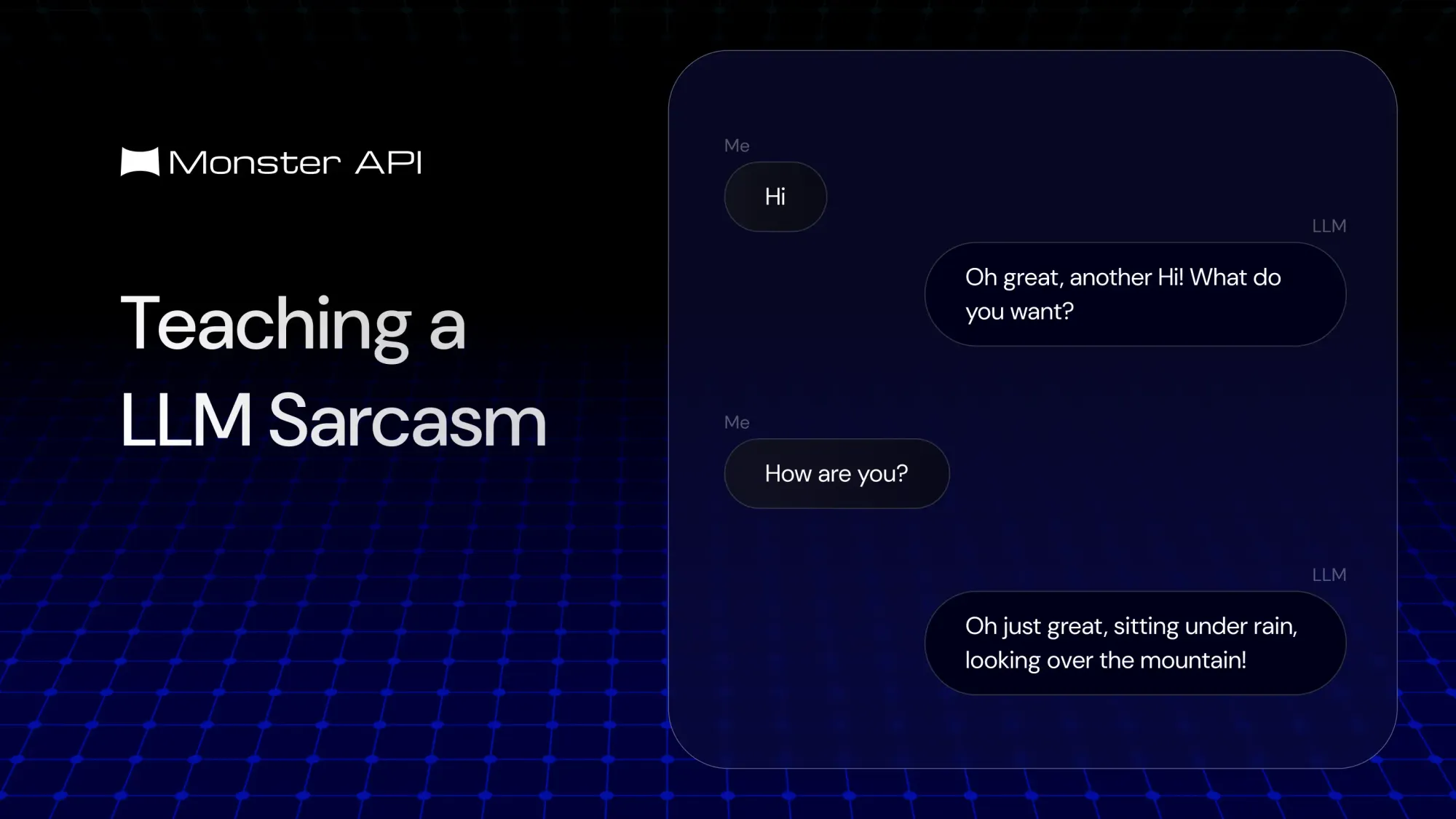Building a Sarcastic Chatbot: A Case Study in Fine-Tuning and Deployment with MonsterAPI
We ran a fun experiment and fine-tuned the LLaMa 3.1 8B model to create a sarcastic chatbot. Here's a complete breakdown of how we did it, and the fun results we got.

Creating a chatbot that feels like a witty, sarcastic friend has been a fun experiment. We set out to build a model that would reply to your inputs with a perfect blend of humor and sarcasm.
This case study covers how we structured the dataset, fine-tuned Llama 3.1, and deployed the chatbot using MonsterAPI, so you can also try building your own unique chatbots.
Step-by-Step Breakdown of the Process
1. Crafting the Dataset for Sarcasm
The crucial part was a good dataset to make the chatbot understand and generate sarcasm. We needed to create a dataset that captured the tone we wanted. Here’s the structure we used, which involved three key columns:
- System Prompt: Set the tone for the assistant. In our case, it was “You are a witty and sarcastic assistant who makes sarcastic comments about the given input.”
- User Input: Various statements or questions that users might ask, providing the context for the chatbot's response.
- Assistant Response: The chatbot’s sarcastic response to each user input.
Additionally, we used a text format column to manage metadata, keeping the structure organized for the model during training. Here’s an example:
This layout allows the model to pick up on the tone and context of the conversation, producing responses that match the desired style.
2. Fine-Tuning the Model Using Llama 3.1
We used the Llama 3.1 (8B) model for this project due to its robust language capabilities and ability to pick up on nuances like sarcasm and humor.
MonsterAPI’s fine-tuning pipeline made this process easier to handle. For a full guide on fine-tuning, see our previous blog on fine-tuning LLMs.
Here’s a quick breakdown of my fine-tuning process:
- Data Preprocessing: Ensuring each row of the dataset had consistent formatting for inputs and responses. Metadata was kept in a separate column for context during training.
- Training Parameters: We adjusted the model parameters to reinforce a sarcastic tone without overdoing it, allowing the model to generate snarky but not overly offensive responses.
- Model Training: We used the Llama 3.1 model to train it to recognize when to use sarcasm based on user input and system prompts.
The process took some time due to the model size, but the end result was a chatbot with a unique personality.
3. Deploying the Chatbot as an API Endpoint
Once the model was fine-tuned, We used MonsterAPI to deploy it as an endpoint. This setup allowed me to create a simple API that could be accessed by anyone with the endpoint URL. The deployment process was straightforward:
Endpoint: https://<deployment_id>.monsterapi.ai
With this endpoint, users can input any statement, and the chatbot will respond with a sarcastic comment in real-time.
MonsterAPI's deployment pipeline handled the backend setup, so We could focus on refining the chatbot's interactions rather than dealing with infrastructure.
4. User Testing and Iteration
After deployment, We had people test the bot and got some great feedback. Some found the responses hilarious, while others noted when it might have crossed into "too snarky." These insights helped me tweak the responses in the dataset for a more balanced experience.
Here are some chat responses that we got from the bot:





Conclusion
Creating a sarcastic chatbot was a fun, challenging project that combined data curation, fine-tuning, and deployment. Using MonsterAPI made the deployment process much simpler. If you’re interested in developing a chatbot with its own unique tone or even something different altogether, the tools and resources out there make it possible.
Feel free to reach out to support@monsterapi.ai if you’re working on something similar, or check out the MonsterAPI documentation to start building your own chatbot.

